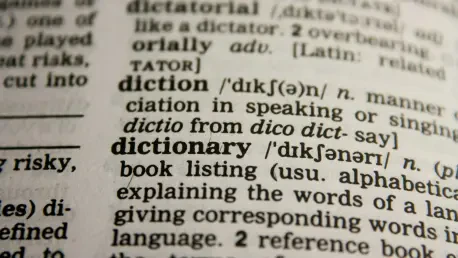Introduction to Language Exclusion in the Workplace
Imagine a workplace meeting where critical decisions are being made, yet a single employee sits in silence, unable to comprehend the conversation because colleagues are speaking a language they don’t understand, creating a barrier to participation. This scenario, far from hypothetical, reflects a growing concern in diverse work environments where language exclusion can erode trust and fairness, impacting employee morale. Such exclusionary practices raise a pressing question about whether they constitute discrimination, potentially violating an employee’s dignity and creating a hostile atmosphere. A notable case in Scotland involving Samantha Kellington-Crawford, a care assistant at a care facility, brought this issue to light when she faced exclusion during a supervision meeting, leading to a significant legal outcome. This guide explores the legal, emotional, and practical dimensions of language exclusion, delving into the tribunal ruling, expert perspectives, and actionable strategies for employers to foster inclusivity.
The importance of addressing language exclusion cannot be overstated, as it directly impacts workplace harmony and legal compliance. Failing to tackle such issues risks not only employee morale but also an organization’s reputation and financial standing. This discussion will cover the legal definition of harassment, the specifics of the tribunal decision in the mentioned case, insights from industry experts, and best practices for preventing similar incidents in diverse workplaces.
Why Addressing Language Exclusion Matters
Recognizing language exclusion as a potential form of discrimination under employment law is critical for maintaining equitable workplaces. When employees are deliberately or inadvertently left out of conversations due to language barriers, it can signal disrespect and undermine their sense of belonging. This exclusion often fosters a sense of alienation, which can escalate into broader workplace conflicts if left unchecked.
Moreover, such practices can cultivate a hostile or intimidating environment, directly contravening the principles of fairness that modern organizations strive to uphold. The ripple effects include diminished productivity and strained interpersonal relationships among team members. Legal repercussions also loom large, as tribunal rulings have increasingly highlighted the seriousness of language-based discrimination.
Addressing this issue yields tangible benefits, such as enhanced employee morale, reduced risk of costly legal battles, and a stronger culture of inclusivity. Ignoring language-based harassment, on the other hand, may lead to reputational damage and significant financial penalties, as seen in various legal precedents. Proactively tackling these challenges positions employers as leaders in ethical workplace practices, setting a standard for others to follow.
Key Aspects of the Tribunal Case and Legal Framework
The case of Samantha Kellington-Crawford at a care facility in Scotland serves as a pivotal example of how language exclusion can be legally interpreted as harassment and racial discrimination. During a supervision meeting, she was placed in a vulnerable position when managers conversed in a language she could not understand, effectively sidelining her from critical discussions. This incident underscored the intersection of language use and workplace discrimination, prompting a deeper examination of legal standards.
The tribunal’s decision to award compensation highlighted that language exclusion can violate an employee’s dignity, regardless of the intent behind the behavior. This ruling emphasized broader legal principles, such as the protection of employees from conduct that creates an intimidating or degrading environment. It serves as a reminder that workplace interactions must prioritize fairness and transparency to avoid legal scrutiny.
Beyond the specifics of this case, the legal framework surrounding harassment in employment law provides a foundation for understanding such rulings. Courts and tribunals assess the impact of exclusionary behavior on the individual, rather than solely focusing on whether the action was deliberate. This approach ensures that subtle forms of discrimination are not overlooked, reinforcing the need for employers to remain vigilant in diverse settings.
The Incident and Tribunal Ruling
On December 14, 2022, during a supervision meeting at a care facility in Scotland, Samantha Kellington-Crawford found herself outnumbered by three managers who spoke in Polish, a language she could not comprehend. This exclusion occurred during a discussion of sensitive matters, ultimately resulting in a final written warning as an alternative to dismissal for alleged misconduct. The situation left her unable to participate or defend herself effectively, amplifying the sense of unfairness.
The employment tribunal ruled in her favor, awarding £2,500 in compensation for racial discrimination and harassment. The decision rested on the principle that the impact of such conduct on an employee’s dignity, rather than the intent of the managers, determines the validity of harassment claims. This outcome sent a clear message about the seriousness of language exclusion in formal workplace settings.
This ruling also highlighted the need for clear communication norms during critical interactions. The tribunal’s reasoning pointed to the broader expectation that employees should not be sidelined due to language barriers, especially in situations where their professional standing is at stake. Such legal outcomes serve as a cautionary tale for organizations to reassess their internal practices.
Legal Definition of Harassment in Employment Law
Under employment law, harassment is broadly defined as unwanted conduct related to protected characteristics, such as race, that creates a hostile, degrading, or intimidating environment. This definition encompasses a wide range of behaviors, including language exclusion, which can subtly undermine an employee’s sense of worth. Legal standards prioritize the employee’s experience over the perpetrator’s intent, ensuring accountability for impactful actions.
Language exclusion fits within this framework when it isolates individuals from meaningful participation in workplace discussions. Such behavior can be deemed discriminatory if it contributes to an environment where employees feel devalued or disrespected. Tribunals often assess whether the conduct violated the individual’s dignity, a key criterion in harassment claims.
Expert opinion, such as that from Samantha Dickinson of a prominent legal firm, reinforces that successful harassment claims hinge on demonstrating a link between the unwanted conduct and a protected characteristic. This perspective clarifies that employers must be proactive in preventing situations where language use becomes a tool for exclusion. Legal guidance consistently emphasizes the importance of fostering an environment where all employees feel included and respected.
Best Practices for Employers to Prevent Language-Based Discrimination
Employers bear a crucial responsibility to prevent language-based discrimination through proactive measures that prioritize inclusivity. Establishing robust policies and fostering cultural sensitivity can significantly reduce the risk of harassment claims while enhancing workplace cohesion. These strategies require commitment and consistent implementation to address the nuances of diverse work environments effectively.
Beyond legal compliance, adopting best practices signals an organization’s dedication to fairness and respect for all employees. This approach not only mitigates risks but also builds trust among staff, creating a more collaborative atmosphere. The following recommendations provide a roadmap for employers to navigate the challenges of language exclusion with confidence.
Clear guidelines and training initiatives stand out as essential tools for preventing misunderstandings and ensuring equitable treatment. By embedding inclusivity into daily operations, organizations can avoid the pitfalls of exclusionary behavior. These actionable steps, supported by practical examples, offer a framework for creating a workplace where every voice is valued.
Establishing Clear Communication Policies
Setting explicit norms for language use during workplace interactions is a foundational step for employers. These norms should mandate the use of a common language, particularly in formal meetings or decision-making discussions, to ensure all employees can participate fully. Such policies help eliminate ambiguity and reinforce a culture of transparency.
Written guidelines can further solidify these expectations by outlining when and how a common language should be used. For instance, specifying that key communications must occur in a language understood by all present prevents unintentional exclusion. This clarity empowers employees to engage confidently without fear of being sidelined.
Training managers to recognize and address exclusionary behavior is equally vital. Equipping leadership with the skills to intervene when language barriers arise can prevent escalation of tensions. By prioritizing communication policies, employers lay the groundwork for a workplace where inclusivity is not just an ideal but a daily practice.
Providing Anti-Harassment and Cultural Sensitivity Training
Regular training sessions on harassment laws and cultural awareness are indispensable for educating both employees and managers about the risks of exclusionary behavior. These programs should cover the legal implications of language-based discrimination and emphasize the importance of respecting diverse backgrounds. Such education equips staff to navigate complex interpersonal dynamics with greater empathy.
Training can also incorporate specific scenarios illustrating the impact of language exclusion, making abstract concepts tangible. For example, role-playing exercises might simulate a meeting where one participant is left out due to language barriers, prompting discussions on how to address such situations. This hands-on approach helps participants internalize the significance of inclusive communication.
Insights from professionals like Chris Garner of a leading consultancy highlight the need for fairness and sensitivity in workplace interactions. Advocating for training that addresses cultural nuances, experts stress that understanding different perspectives prevents unintentional harm. Committing to ongoing education ensures that organizations remain adaptable to evolving workplace diversity.
Conclusion and Practical Recommendations for Employers
Reflecting on the landmark case of Samantha Kellington-Crawford, it becomes evident that language exclusion can indeed be classified as workplace discrimination and harassment under employment law. The tribunal’s decision marked a turning point, shedding light on how seemingly minor actions carry profound legal and emotional consequences for employees. This outcome urges organizations to reevaluate their practices to prevent similar oversights.
Moving forward, employers are encouraged to adopt clear communication policies and invest in anti-harassment training as foundational steps toward inclusivity. Exploring innovative approaches, such as leveraging technology for real-time translation during meetings, emerges as a potential solution to bridge language gaps. Additionally, establishing feedback mechanisms where employees can anonymously report exclusionary incidents offers a proactive way to address issues before they escalate.
These strategies benefit diverse workplaces, HR professionals, and employees alike by fostering environments where equitable treatment is prioritized. Regular policy reviews and cultural sensitivity refreshers are advised to sustain long-term effectiveness. By embracing these actionable measures, organizations position themselves to not only comply with legal standards but also champion a culture of respect and inclusion for future generations of workers.









